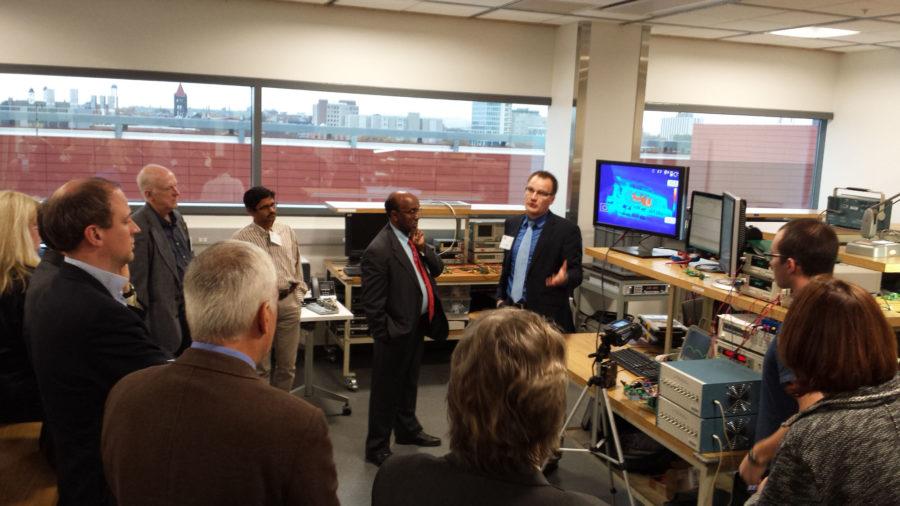University to lead new Engineering Research Center
“Professor Robert Pilawa explains the effects of temperature implications on electrical power systems architecture.”
August 26, 2015
The University is leading a new Engineering Research Center that is being further developed with an $18.5 million grant from the National Science Foundation.
The center, called Power Optimization for Electro-Thermal Systems, or P.O.E.T.S., is being established to increase the power in smaller electrical systems, said Andrew Alleyne, professor in Mechanical Science and Engineering.
The center is focused on “developing new ways to control the flow of energy, which would allow us to build more efficient machines, more powerful machines and save money,” said Paul Braun, professor in Materials Science and Engineering and a leader in the materials engineering division of the research center.
Alleyne, who will lead P.O.E.T.S., said students on campus will have the opportunity to take classes that integrate the research the center focuses on with their coursework.
“We will have a multidisciplinary type of curriculum where we will link some of the courses amongst different departments, with the idea of coming up with a more systems level disciplinary course focused more on design of complex electrical and thermal power systems,” Alleyne said. “One of the things that should come out of this is better-trained engineers.”
Get The Daily Illini in your inbox!
The center will integrate multiple domains of engineering, including mechanical, thermal, material and electrical, to “increase the total power density of current mobile electrified systems by 10-100 times over current state-of-the-art systems,” according to the P.O.E.T.S. website.
Caterpillar, John Deere and Texas Instruments are a few of the companies the center partners with; additionally, the center has international partnerships in Sweden and Brazil, according to the site.
Alleyne said the center will bring new business opportunities for students at the University and in the Champaign-Urbana area.
“There are three things that will come out of the center: there’s the research component, the education component and the business-entrepreneurship side of it,” he said.
This type of center is one of the United States’ long-term research investment mechanisms, Braun said. A product may not come out of the center for another 10 years, he said, but P.O.E.T.S is focused on determining what the need will be 10 or 20 years from now and what researchers can do today to be prepared.
“The goal here is not to solve next year’s problem,” Braun said. “Our goal is to take the work from basic science forward to the point of identifying real, industry-relevant solutions.”
Peter Schiffer, vice chancellor for research, said an important goal of P.O.E.T.S. is to prepare engineering graduate students while doing important research with people on and beyond campus.
“Our faculty, staff, and students, as well as the companies and institutions that are participating in the center, are making the fundamental discoveries that will enable technological innovations in electrical systems,” Schiffer said.







